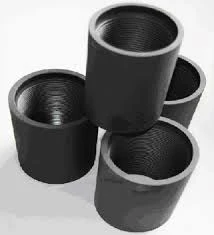- Afrikaans
- Albanian
- Amharic
- Arabic
- Armenian
- Azerbaijani
- Basque
- Belarusian
- Bengali
- Bosnian
- Bulgarian
- Catalan
- Cebuano
- Corsican
- Croatian
- Czech
- Danish
- Dutch
- English
- Esperanto
- Estonian
- Finnish
- French
- Frisian
- Galician
- Georgian
- German
- Greek
- Gujarati
- Haitian Creole
- hausa
- hawaiian
- Hebrew
- Hindi
- Miao
- Hungarian
- Icelandic
- igbo
- Indonesian
- irish
- Italian
- Japanese
- Javanese
- Kannada
- kazakh
- Khmer
- Rwandese
- Korean
- Kurdish
- Kyrgyz
- Lao
- Latin
- Latvian
- Lithuanian
- Luxembourgish
- Macedonian
- Malgashi
- Malay
- Malayalam
- Maltese
- Maori
- Marathi
- Mongolian
- Myanmar
- Nepali
- Norwegian
- Norwegian
- Occitan
- Pashto
- Persian
- Polish
- Portuguese
- Punjabi
- Romanian
- Russian
- Samoan
- Scottish Gaelic
- Serbian
- Sesotho
- Shona
- Sindhi
- Sinhala
- Slovak
- Slovenian
- Somali
- Spanish
- Sundanese
- Swahili
- Swedish
- Tagalog
- Tajik
- Tamil
- Tatar
- Telugu
- Thai
- Turkish
- Turkmen
- Ukrainian
- Urdu
- Uighur
- Uzbek
- Vietnamese
- Welsh
- Bantu
- Yiddish
- Yoruba
- Zulu
Exploring Casing Threads and Couplings in Oil and Gas Industry Applications
Understanding Casing Threads and Couplings in Oil and Gas Operations
In the world of oil and gas drilling, the integrity of casing systems is paramount to ensure both the safety and efficiency of operations. Among the critical components of a casing system are the casing threads and couplings. These specialized features play a vital role in connecting sections of casing, providing stability and strength to withstand the extreme conditions encountered during drilling and production processes.
Casing Threads An Overview
Casing threads are precision-engineered connections found at the ends of casing pipes. Their primary function is to enable the joining of multiple casing sections, forming a continuous structure within the wellbore. Casing threads are not merely mechanical connections; they are intricately designed to provide a seal that prevents the escape of fluids and gas from the formation. The design of these threads is governed by strict standards and practices to ensure compatibility and functionality.
There are several types of casing threads commonly used in the industry, such as API (American Petroleum Institute) threads, which are standardized for consistency and reliability. API threads often use a tapered design that ensures a tight fit, essential for preventing fluid migration. In contrast, premium threads offer advanced sealing capabilities and are designed to withstand higher pressures and temperatures, representing a technological advance over traditional threading options.
The Role of Couplings
Couplings serve as the intermediary components that connect sections of casing, facilitating the assembly of the entire casing string. They are threaded on both ends to attach to casing pipes while providing the necessary elasticity and strength to absorb the stresses encountered during drilling. Couplings can also serve as a protective measure, helping to maintain the integrity of the casing threads and mitigating the risks associated with wear and tear.
casing threads and couplings

Couplings come in various designs and materials, tailored for specific operational needs. Standard couplings may be sufficient for routine applications, while specially designed couplings, like those with a flush joint or integral, are used in applications requiring enhanced strength and reduced external diameter. Selecting the right coupling is crucial, as it directly influences both the integrity of the casing string and the operational efficiency of the drilling process.
Challenges and Considerations
Despite their significant advantages, casing threads and couplings are not without challenges. One of the most critical issues is the potential for thread damage during installation or drilling. Improper handling can result in cross-threading or stripping, which compromises the connection's integrity. Regular inspection and maintenance are essential to identify and address issues before they lead to more severe problems, like casing failures that could jeopardize entire drilling operations.
Another consideration is the selection of materials. The harsh environments of oil and gas wells often expose casing threads and couplings to corrosive substances, high stresses, and extreme temperatures. Therefore, it is essential to use materials that are resistant to corrosion and can withstand the physical demands of the environment. Recent advancements in materials science have led to the development of protective coatings and alloys designed specifically for these applications.
Future Trends
As the oil and gas industry continues to evolve, so do the technologies surrounding casing threads and couplings. Innovations aimed at improving the reliability and performance of these connections are on the horizon. The development of smart technologies, including sensors embedded within casing systems, may provide real-time monitoring of the structural integrity of casing threads and couplings. This capability could lead to predictive maintenance, reducing downtime and operational costs.
In conclusion, casing threads and couplings are fundamental components of oil and gas drilling operations. Their proper design, selection, and maintenance are essential to ensuring the safety and integrity of the wellbore. As the industry faces new challenges and technologies, continued emphasis on innovation in these areas will be crucial for fostering efficient and productive drilling practices.
-
Tubing Pup Joints: Essential Components for Oil and Gas OperationsNewsJul.10,2025
-
Pup Joints: Essential Components for Reliable Drilling OperationsNewsJul.10,2025
-
Pipe Couplings: Connecting Your World EfficientlyNewsJul.10,2025
-
Mastering Oilfield Operations with Quality Tubing and CasingNewsJul.10,2025
-
High-Quality Casing Couplings for Every NeedNewsJul.10,2025
-
Boost Your Drilling Efficiency with Premium Crossover Tools & Seating NipplesNewsJul.10,2025







